You won’t believe how commercial hexacopters are transforming industries overnight, and we’re not talking small changes. These drones are reshaping the future of aerial logistics in ways that were unimaginable just a few years ago.
This revolution matters now more than ever. With e-commerce booming and the demand for swift deliveries skyrocketing, understanding the technology behind these heavy-lift drones is crucial. Prepare to dive into a world where drones power entire supply chains!
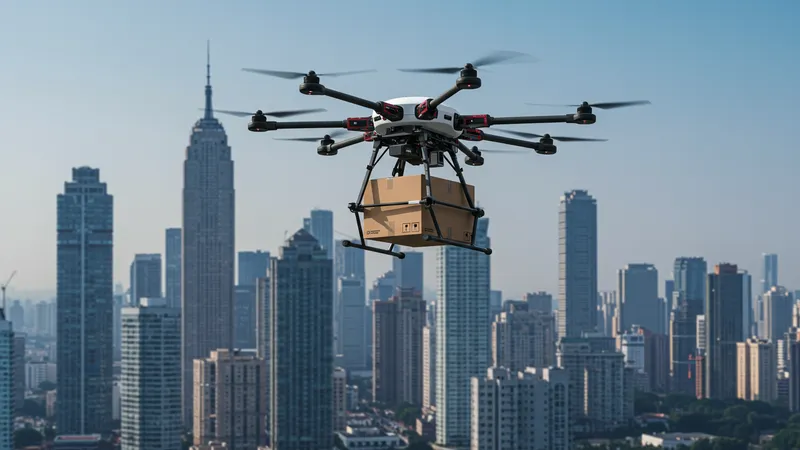
Here’s the kicker: these drones aren’t just handy delivery boys. They’re revolutionizing industries like construction, with altitudes managing tasks that once required risky manpower. Imagine shifting tonnes of material with pinpoint accuracy! But that’s not even the wildest part…
Trust in remote medical supply deliveries? These drones are breaking barriers by reaching isolated areas faster than conventional means, saving lives by transporting critical supplies in emergencies. A pilot in Africa cut human resource needs by 50%! But stay tuned, because we’re just scratching the surface…
The future of aerial logistics looks dramatically different with advances in drone technology leading the way. Imagine the possibilities: surveillance, agriculture, even firefighting across challenging terrains. What happens next shocked even the experts…
Let’s start with the mind-boggling engineering behind heavy-lift drones. These vehicles are equipped with propellers designed not just for flight stability but for hauling substantial loads. Advanced gyroscopic stabilization allows them to maintain balance while carrying unconventional payloads.
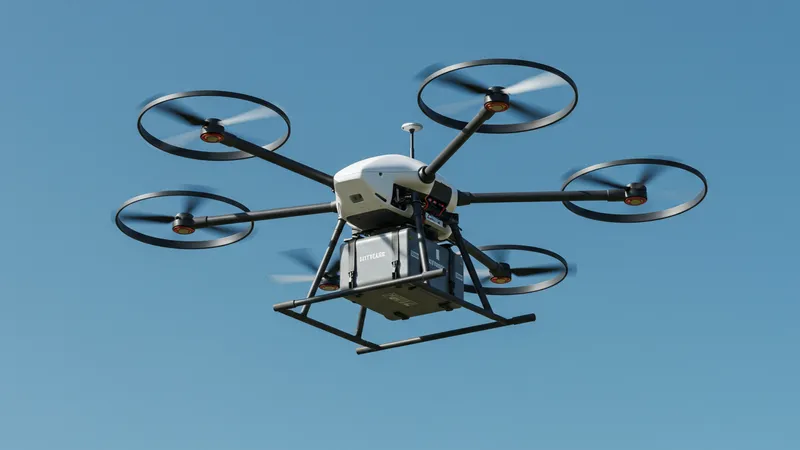
Battery life is often a deal-breaker, yet with rapidly advancing lithium-ion technologies, these drones can now maintain a steady flight for up to an hour while carrying full loads! This might sound like trivial info, but it’s a game-changer for bulk delivery operations.
And about maintenance, you ask? Predictive maintenance systems now empower users to foresee technical downtimes before they occur. From monitoring real-time data to checking wear-and-tear, these systems preemptively alert operators.
The advancements go far beyond logistics; imagine drones mapping out entire cities with laser precision! But there’s one more twist—innovators are already working on next-gen load sensors that could redefine the precision of payload delivery.
Beyond shifting parcels, medical emergencies are now getting a new savior. These drones can transport essential medications, diagnostic kits, and even organ deliveries between hospitals, reducing critical wait times significantly.
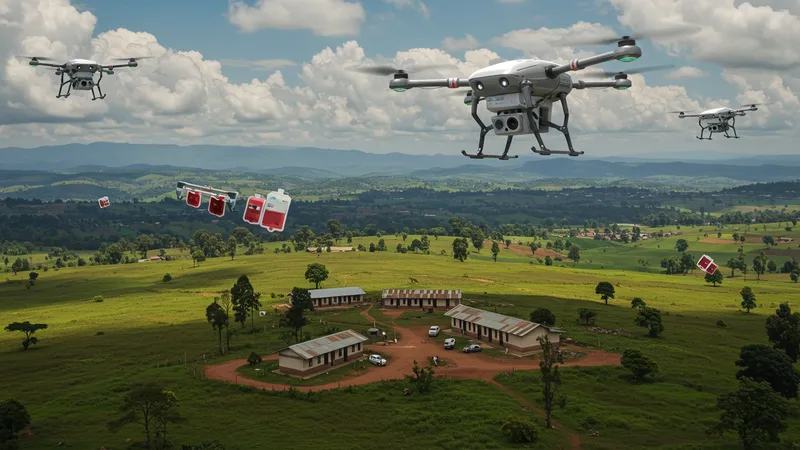
An unbelievable case in point: Rwanda utilizes a fleet of drones to deliver blood to rural health facilities, cutting delivery times from hours to mere minutes! You might think this sounds futuristic, but it’s a functioning reality today.
But here’s something that’ll grab you—automated drone corridors! These pre-planned routes ensure zero interference from other low-altitude crafts, promising a seamless navigation without human intervention.
And yes, the tech doesn’t stop there; AI integration is enhancing their path-planning capabilities. What you read next might change how you see this forever.
Did you know drones drastically reduce carbon footprints compared to traditional logistics methods? Less reliance on manned vehicles means a reduction in fossil fuel consumption, positively impacting our global carbon emissions.
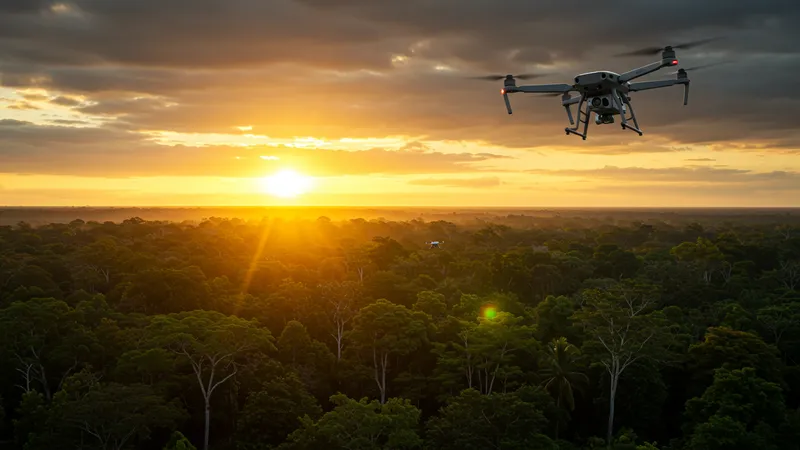
In the Amazon, drone delivery tests shrunk the operational carbon footprint by over 90%, making a bold statement about the future of eco-friendly logistics. The ramifications are profound and wide-ranging.
Equally interesting is the reduced noise pollution in urban settings. Carefully calibrated engines maintain stealth and efficiency, leading to quieter skies, a huge win for city dwellers weary of constant transport noise.
Moreover, lightweight drone frames constructed from biodegradable eco-materials are now in testing phases, pushing the boundaries of sustainable tech. But what about the unexpected challenges?
The rapid integration of drones in logistics isn’t without bureaucratic obstacles. Agencies across the globe are grappling with crafting policies that ensure safe and efficient utilization.
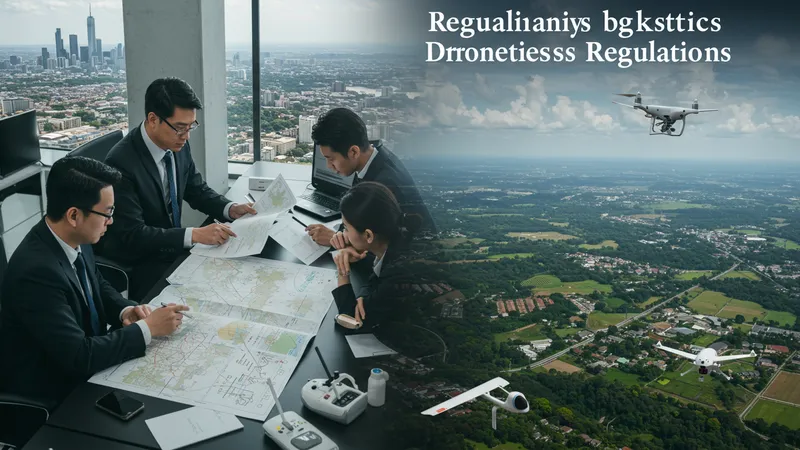
In the U.S., the FAA is leading regulatory requirements to standardize drone airspace management, but regional disparities often cause operational headaches. Think about urban vs. rural use cases!
However, operators are pushing forward with test runs under controlled environments to demonstrate the feasibility and safety of these technologies. These efforts are slowly persuading policy shifts, yet plenty of red tape remains.
The most notable progress? Establishing international guidelines through organizations like ICAO to streamline cross-border drone flights. But that’s just the beginning of this legislative journey…
Artificial Intelligence is proving vital in elevating drone performances. Machine learning algorithms now process vast datasets for smarter navigation and load optimizations, heralding a new era of automation.
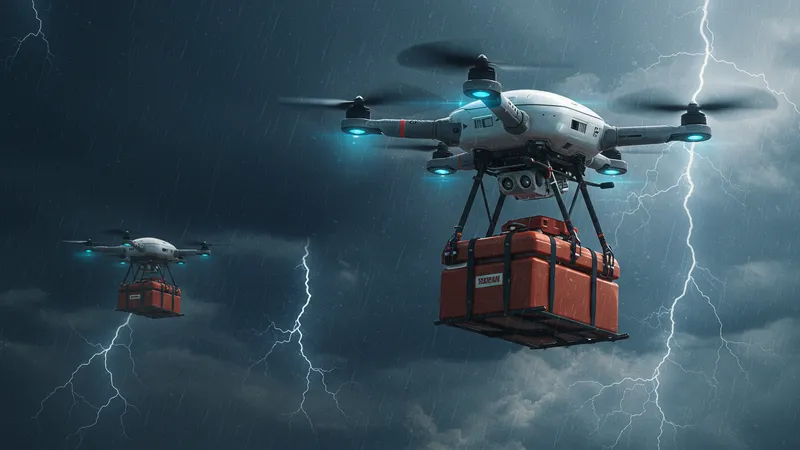
Picture this: drones independently determining optimal paths amidst harsh weather conditions while carrying lifesaving supplies—no pilot intervention required! But the AI revolution doesn’t end at navigation.
The tech is evolving, teaching drones to recognize and adapt to real-time conditions such as sudden obstacle detection, enriching reliability metrics tremendously. A stunning leap, wouldn’t you agree?
AI-aided mission planning sees drones working in tandem, creating dynamic networks for complex tasks. Yet, there’s more beneath the surface, waiting to unfold…
What’s the economic ripple-effect of adopting drones at scale? For starters, cutting operational costs by replacing traditional transportation methods means firms benefit from dramatic savings.
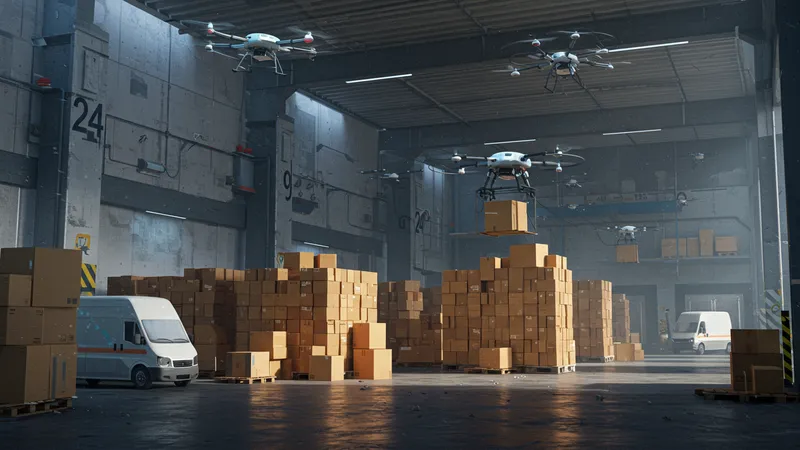
Amazon, for instance, estimates a 40% cost reduction per package delivery via drone fleet optimization strategies over traditional van deliveries—a figure set to disrupt conventional logistics fundamentally.
But beyond savings, firms are tapping into competitive advantages: launching their services in remote locales previously deemed too costly to reach. The reach expansion speaks volumes of untapped commerce potential.
With such significant revenue implications, these drones offer unparalleled opportunities for growth in uncharted territories. But dive deeper… what about the human elements involved?
Despite automation, job evolution accompanies innovation. The drone era is creating a demand for skilled pilots, operators, and maintenance technicians—all new career avenues for professionals seeking the next frontier.
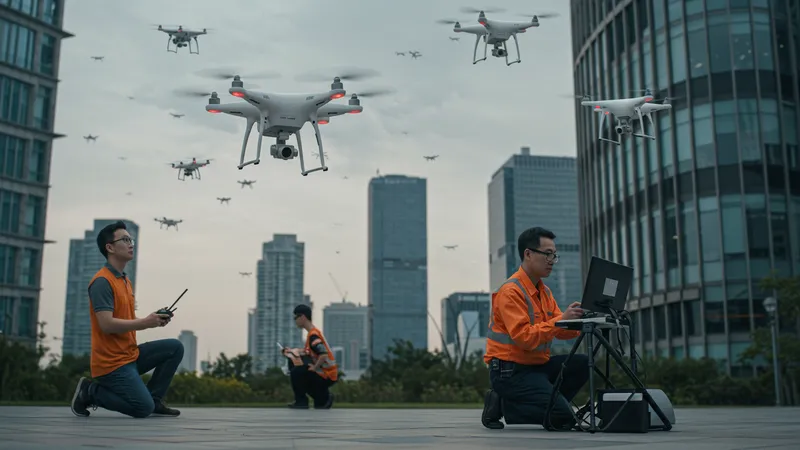
The result? Not job loss, but unmasked opportunities as these sectors rapidly expand. An estimated 100,000 new drone operator roles are anticipated to emerge in the next decade alone.
Moreover, the tech-savvy workforce will need to adapt, shifting from traditional roles to those at the intersection of technology and logistics. But will everyone easily transition?
The skills gap remains a critical challenge; however, training programs across educational institutions are gearing up to fill the void. What you discover next propels the education narrative forward.
Technological advances ensure that drone safety isn’t left to chance. The latest systems come packed with real-time diagnostic features, enhancing safety margins remarkably.
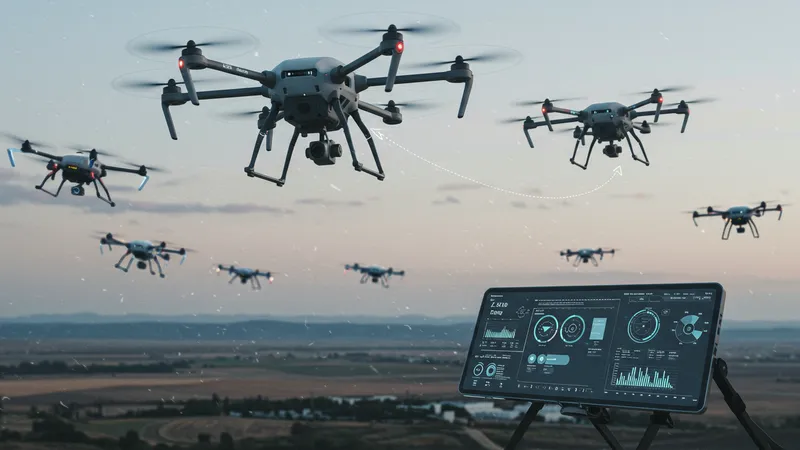
Consider: automated fail-safes that navigate drones back to base on instance of system failures—it’s a step upwards in failproofing operational measures. A vital consideration as fleets grow.
Additionally, collision avoidance technology, leveraging sensor arrays, further minimizes accident risks, promising secure operations even in densely populated areas.
Funnily enough, drone “smart” parachutes are in testing stages—an emergency response mechanism conceived to ensure gentle landings. Still, what about the unexpected benefits of such advancements?
Drones offer revelatory breakthroughs in surveillance and security operations. They gather real-time intel while reducing human risk—a capability that speaks volumes in times of crisis.
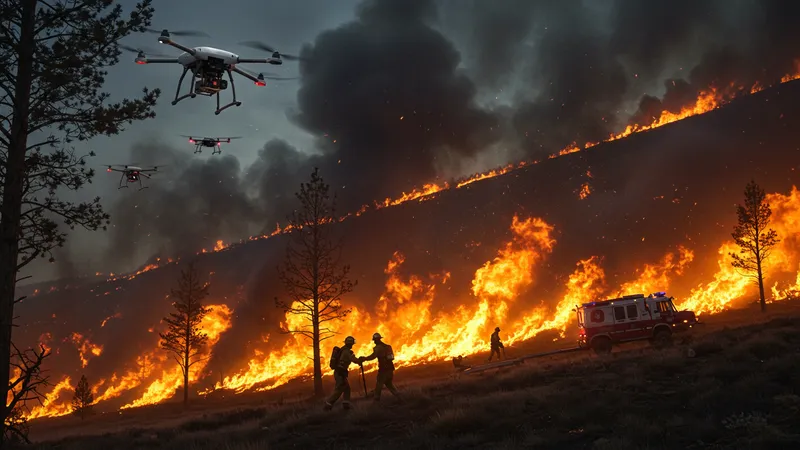
For instance, during natural disasters like wildfires, drones can provide live updates, charting dynamic disaster areas without endangering responders. These “eyes in the sky” add a crucial layer of resilience to crisis management.
This viewpoint becomes pivotal in border security, too, where continuous oversight without physical presence has proven enforceable. But how do these technologies transform law enforcement protocols?
The intersection of surveillance and AI-driven analytics maps crime trends, offering objectivity and precision previously deemed impossible. Could this redefine security paradigms for good?
Cities choked with traffic regularly lose millions in productivity. Drones offer a sky-born solution by delivering time-sensitive packages while bypassing snarls in minutes instead of hours.
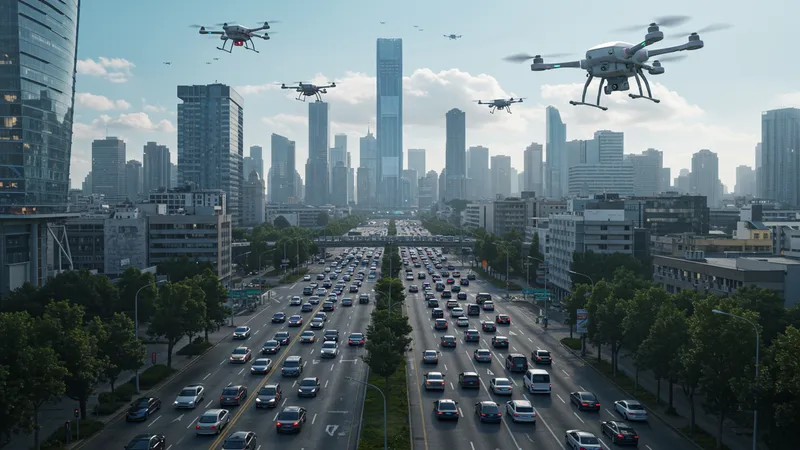
The technology is poised to resolve what's known as the “last-mile delivery” problem, where ground transport efficiency plummets due to urban congestion.
The brilliance lies not merely in time saved but in unlocking unutilized urban airspaces, translating into new delivery routes that transcend traditional constraints.
This transformation isn’t confined to just parcels—imagine quick deliveries of foodstuffs or critical healthcare supplies unhindered by terrestrial gridlock. And the next revelation? It’s transformative.
Think of drones as guardians of modern farms; aerial surveillance identifies crop health issues faster than any human can. It’s a quiet revolution sweeping through agriculture.
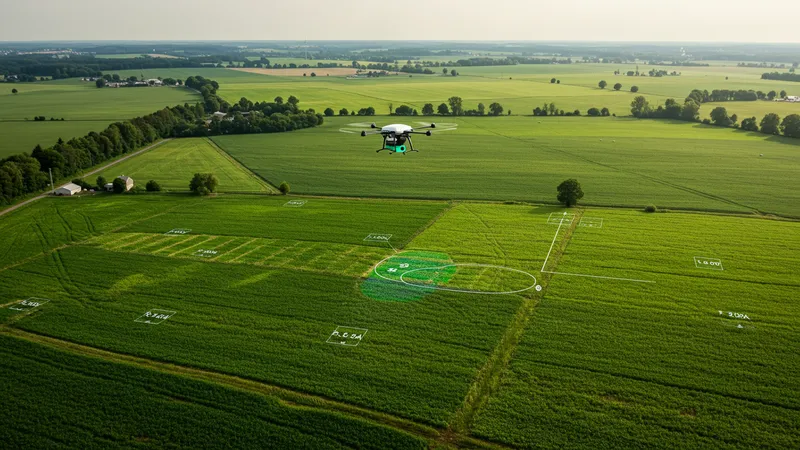
Farmers are embracing these devices for precision agriculture, assessing soil health through multispectral imaging—drastically improving yields within shorter growth cycles.
What’s fascinating? The cost-effectiveness of drone interventions over machinery drastically reduces labor expenditures and environmental impact by streamlining pesticide usage atom-by-atom.
Yet, as adoption continues, case studies show promising yield increases of 40%—proving that drones aren’t a passing trend but the future of farming. And yet, one fascinating notion remains…
Dronescapes redefine cinematic perspectives, providing filmmakers unparalleled vantage points to capture awe-inspiring aerial footage—cutting-edge techniques push creative boundaries exponentially.
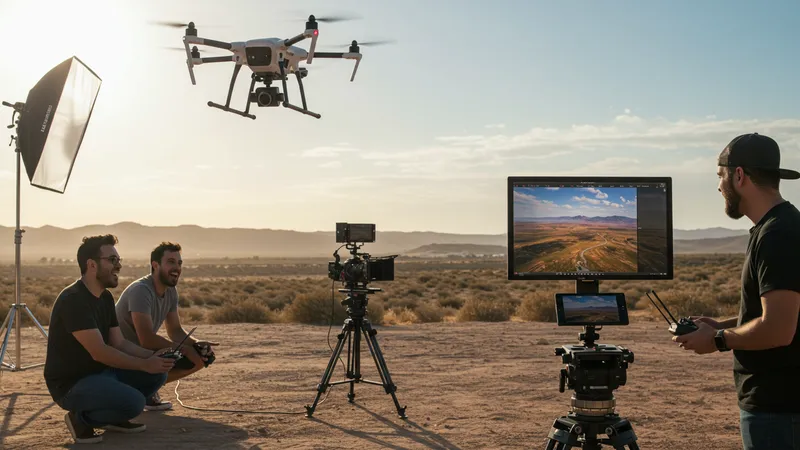
The flexibility afforded by drones allows quick, dynamic shots previously only possible through high-budget planning and expensive rigs. Indie projects can soar thanks to these wings!
Yet what’s astounding is the incorporation into virtual reality filmmaking—the marriage between drone agility and immersive tech offers unprecedented viewer experiences, defying preconceptions.
The entertainment dimension is just one feather in the cap of drone versatility, but consider the broader implications across visual arts—it’s a bold reimagining of creativity. Ready for the concluding marvel?
This technological era redefines norms, fostering revolutions across diverse fields with drones at the helm. As logistics pathways open and eco-friendly skies become reality, sharing these insights is hardly optional.
Are we prepared to witness drones construct cities and protect fragile ecosystems? As stakeholders of the future, participating in this narrative is pivotal. So, share this breakthrough, bookmark the transformation, and stay informed!